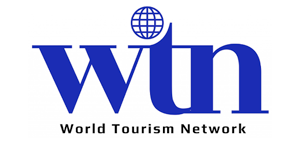The Philippines is actively seeking to attract more tourists from the UK and Europe as representatives from the Department of Tourism (DoT) engage with global travel industry leaders at the World Travel Market 2024 in London and the upcoming IBTM World in Barcelona. With Europe identified as a key growth market, the DoT aims to showcase the Philippines as a premier travel destination, emphasizing its rich culture, scenic landscapes, and unique experiences.
This strategic push aligns with the Philippines‘ focus on increasing tourism receipts by targeting high-value travelers who are likely to spend more during their stays. By highlighting luxury travel, ecotourism, and immersive cultural experiences, the DoT hopes to position the Philippines as an appealing destination for European tourists. This initiative is expected to enhance the country’s global tourism profile, boost international arrivals, and support sustainable tourism growth in the coming years.
As 2024 draws to a close, the Philippines is grappling with lower-than-expected foreign tourist arrival numbers, sparking concerns about the pace of recovery in the tourism sector. The Philippines Department of Tourism (DoT) set an ambitious target of 7.7 million arrivals for 2024, but the latest data, released on 1 November, indicates that the country remains far from achieving this goal. So far, the Philippines has fallen short by approximately 4,879,022 tourists, indicating a significant gap between the current figures and the original target.
Despite the sluggish arrival numbers, Tourism Secretary Christina Garcia Frasco has suggested that raw arrival figures may not be the most accurate measure of the industry’s strength. Instead, Frasco emphasized the importance of tourism receipts—revenue generated from tourist spending—as a more comprehensive metric for evaluating the robustness of the Philippine tourism industry. This shift in focus suggests that while arrival numbers are still important, the economic impact of tourism is becoming a priority for the DoT in measuring overall industry success.
Challenges in Meeting Arrival Targets Amid Global Uncertainties
The Philippine tourism industry, like many others worldwide, has faced numerous challenges in 2024. Uncertain economic conditions, changing travel preferences, and residual impacts of the COVID-19 pandemic have all affected international travel. While travel has generally rebounded since the pandemic, several factors—including increased airfare costs, geopolitical tensions, and inflation—have led to cautious spending among potential international travelers.
Southeast Asia, a popular region for tourists from East Asia, Europe, and North America, has had to navigate these issues, and the Philippines is no exception. While some neighboring countries have reported strong recoveries in tourist arrivals, the Philippines has seen a slower resurgence, compounded by limited airline connectivity and competition with other regional destinations that have aggressively marketed themselves in the post-pandemic travel landscape.
The gap between current arrival numbers and the DoT’s goal underscores the need for adaptive strategies to attract more visitors while also capitalizing on those who are already visiting.
Revised Focus: Tourism Receipts as a Measure of Success
Tourism Secretary Christina Garcia Frasco’s perspective represents a shift in how tourism success is assessed in the Philippines. Rather than focusing exclusively on arrival numbers, the DoT is now looking at tourism receipts as a critical indicator of the industry’s strength. By prioritizing revenue from tourism, the department hopes to capture a more comprehensive picture of the economic benefits that the sector contributes to the national economy.
Tourism receipts reflect not only the number of visitors but also the spending power of those visitors. High-value travelers who stay longer and spend more on accommodations, dining, shopping, and activities bring substantial economic benefits even if overall arrival numbers are lower than anticipated. This approach could be more beneficial for sustainable growth, as it focuses on maximizing revenue without necessarily increasing visitor volume, thereby reducing potential strain on local resources and infrastructure.
DoT’s Strategies to Boost Tourism Revenue
To align with this revenue-focused approach, the DoT has been actively promoting various initiatives to enhance the visitor experience and encourage higher spending. This includes promoting luxury travel options, expanding ecotourism destinations, and emphasizing cultural tourism that showcases the unique heritage of the Philippines. The department is also partnering with stakeholders to improve tourism infrastructure, ensuring that accommodations, attractions, and transport options meet the standards expected by high-spending travelers.
In addition, the DoT is working to strengthen its digital marketing efforts, targeting specific demographics and geographic markets that are likely to yield higher receipts. By engaging these audiences and offering personalized travel experiences, the DoT aims to attract tourists who are willing to invest more in unique and immersive experiences rather than focusing solely on visitor numbers.
Comparing Arrival Numbers with Regional Neighbors
In comparison to other Southeast Asian countries, the Philippines faces distinct challenges and advantages. Thailand, Indonesia, and Vietnam, for instance, have seen quicker rebounds in their tourism sectors, partly due to extensive international marketing campaigns and well-established tourism infrastructure. The Philippines, while known for its pristine beaches and rich cultural heritage, still lags in terms of airline connectivity and perceived ease of access.
The DoT acknowledges these differences and is working to overcome them by enhancing accessibility, negotiating with airlines to open more direct flights to key markets, and developing secondary tourism hubs outside of Manila. By promoting less-explored destinations, the DoT hopes to distribute the economic impact of tourism more evenly across the country, supporting local communities and diversifying the visitor experience.
Outlook for 2025: Optimism Amidst Challenges
Looking ahead to 2025, the DoT remains optimistic that the Philippine tourism industry will continue to recover and grow, even if arrival numbers fall short of projections. By focusing on tourism receipts, the DoT believes it can cultivate a more resilient and financially beneficial tourism sector that brings real economic impact. This approach is expected to appeal especially to high-value markets, such as travelers from North America, Europe, and affluent East Asian countries like Japan and South Korea.
The Philippines is also aiming to attract niche markets, such as wellness tourism, adventure travel, and culinary tourism, which are known for generating high spending per capita. By offering unique experiences that appeal to these groups, the country hopes to position itself as a diverse and attractive destination that goes beyond traditional tourist expectations.
- TAGS / KEYWORDS:




.png)



















.jpg)




.png)











